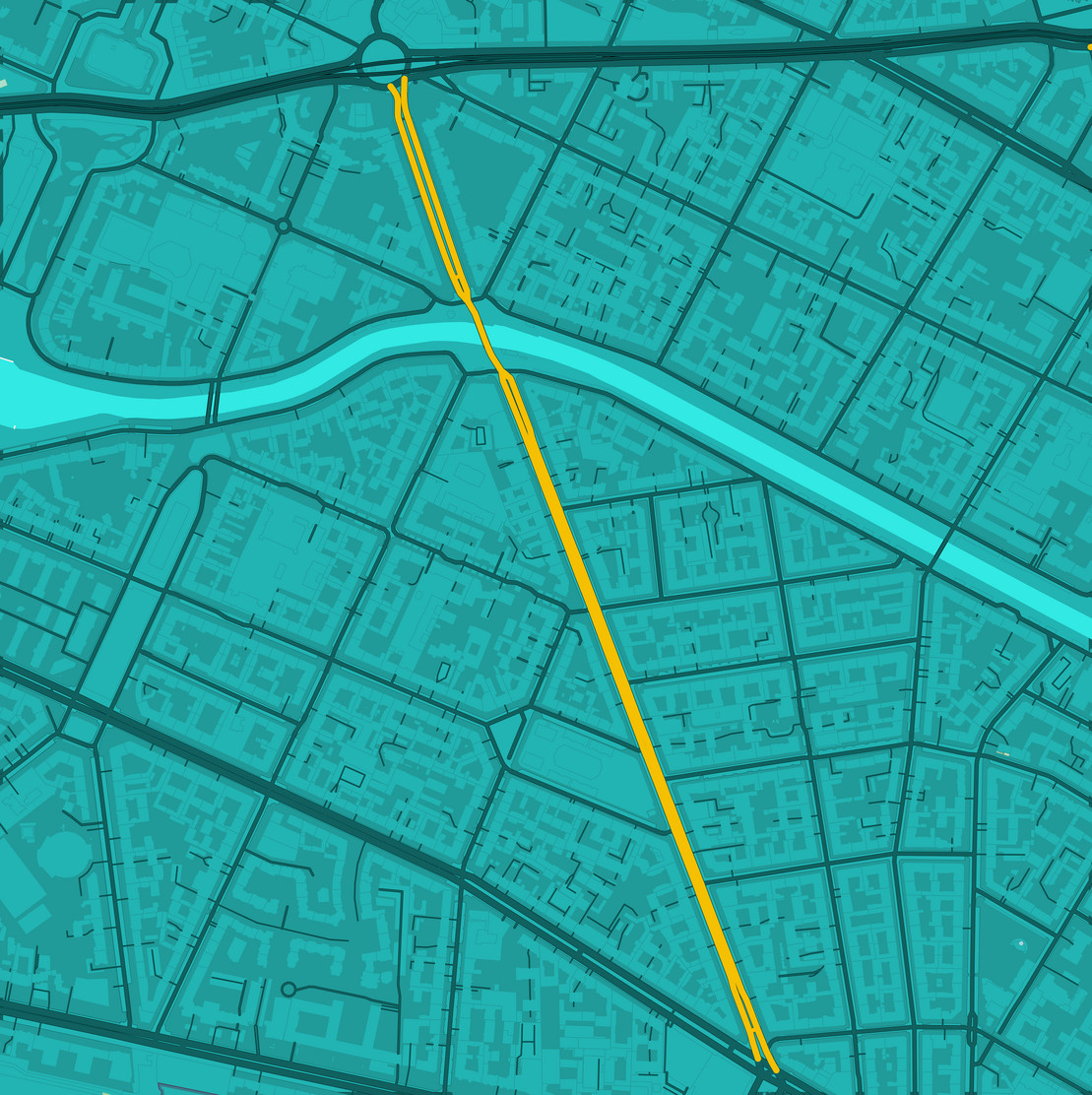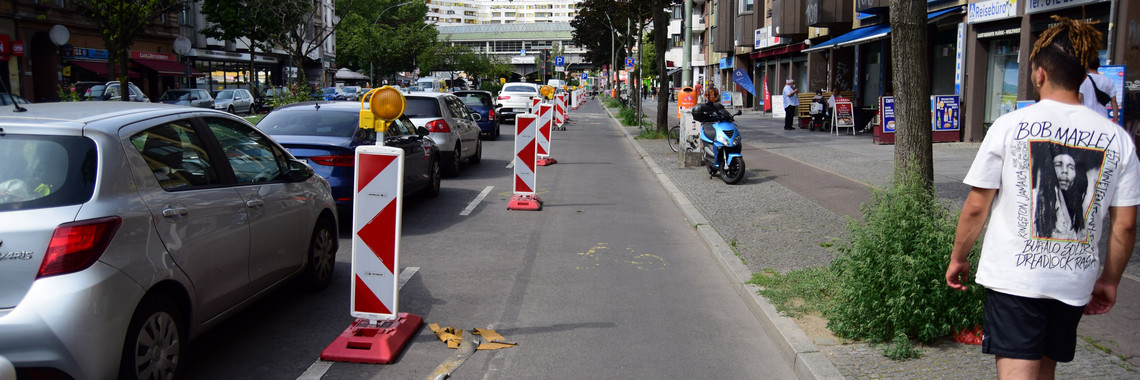Brief description of the study area

The pop-up cycle lane on Kottbusser Damm and continuing northwards on Kottbusser Strasse in Berlin, creates a connection between the central junctions of Kottbusser Tor and Hermannplatz. The cycle lane is one of the first pop-up cycle lanes in Germany and was established on both sides of the road and along the full length of both roads in April 2020. A conversion of the provisional pop-up cycle lanes into permanent cycle lanes with a width of 2.50 m as well as safety separation strips to stationary traffic was completed along both sides of Kottbusser Damm in June 2021. The pop-up cycle lane on Kottbusser Strasse was converted into a permanent cycle lane protected by raised buffers a few months later, in April 2022. At pedestrian crossings, the cycle lane was secured by steel bollards.
Further information and a detailed description of the study area can be found in our report.
Results
If only working days are considered that do not fall during the holiday season – i.e. the days with the most traffic – a decrease of 12.7 percent in the number of vehicles is evident. On the days with the highest traffic volume, almost 3,000 fewer vehicles use Kottbusser Damm than before the cycle lane was established.While there were an average of 2,215 cyclists on Kottbusser Strasse in 2019, the number on Kottbusser Damm was only 1,990. Since the installation of the pop-up cycle lane, an average traffic volume of 2,783 cyclists per day was measured on Kottbusser Damm between April 2020 and the end of 2021. Thus, a 40 percent increase in cycling traffic is evident.
According to the IASS, NO2 concentrations decreased from the measured period without the cycle lane until afterwards with the cycle lane by 10 µg/m³. The analysis of comparative measured values showed that 8.7 µg/m³ of this can be attributed to the establishment of the cycle lane. This corresponds to a reduction in air pollution of around 22 percent.
